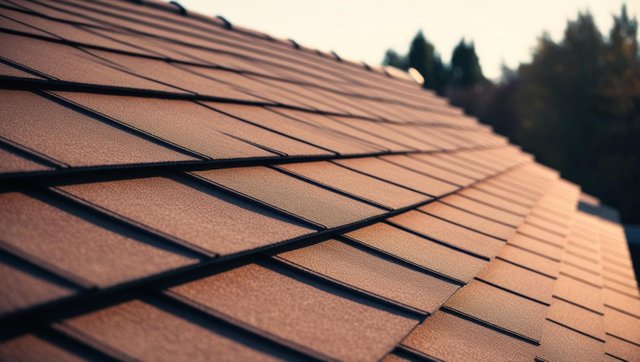Roofing Red Flags: Warning Signs East Bay Property Owners Shouldn’t Ignore
Introduction: Don’t Wait for a Leak to Take Action
Your roof is one of the most important systems protecting your property—yet it’s often one of the most neglected. Many East Bay home and business owners only think about their roof when something goes wrong. But by the time you notice water dripping or stains on the ceiling, the damage may already be extensive (and expensive).
Understanding the early warning signs of roofing issues gives you the upper hand. Catching small problems before they escalate helps extend your roof’s lifespan and reduce costs.
Let’s walk through the key roofing red flags that every East Bay property owner should know—and what to do if you spot them.
- Curled, Cracked, or Missing Shingles
Shingles protect your roof from water, wind, and UV damage. When they start to deteriorate, you’re at greater risk of leaks and insulation problems.
What to look for:
Curled edges or cupped shingle tabs
Cracks, blisters, or bald patches
Shingles that have blown off entirely
These are common signs of an aging roof or one that’s been exposed to harsh conditions. East Bay areas like Livermore and Antioch experience both hot summers and stormy winters, which can speed up shingle wear.
If you spot these symptoms, a professional inspection from PRI-Premiere Roofing, Inc. can help determine whether repair or replacement makes more sense.
- Granules in the Gutters
Asphalt shingles are coated with protective granules. Over time, these granules loosen and end up in your gutters or at the base of downspouts.
Why this matters:
Granule loss accelerates UV degradation and shortens your roof’s life. It’s especially important to monitor this if your roof is over 10 years old.
Cleaning your gutters regularly gives you a chance to check for granule buildup—an easy diagnostic tool for homeowners.
- Interior Stains and Watermarks
Stains on ceilings or walls are often the first noticeable signs of a roof leak, but they can indicate more than just a dripping ceiling.
Look for:
Yellow or brown discoloration
Bubbling paint or plaster
Mold or mildew odor in attics or upper floors
These signs may point to slow leaks that have been active for weeks or even months. In commercial buildings, unnoticed leaks can compromise insulation and electrical systems.
PRI-Premiere Roofing, Inc. provides leak detection services and targeted repairs that minimize disruption to homes and businesses.
- Sagging Rooflines or Soft Decking
Your roof should follow a straight, even line. If you notice sagging or dips, it could signal serious structural issues, such as water damage or insufficient support.
In some East Bay homes, this occurs due to years of moisture exposure, particularly in coastal or foggy areas like Alameda or Berkeley.
A sagging roof is not just a cosmetic issue—it can lead to collapse if left unaddressed.
- Flashing Failures
Flashing is the metal or rubber material that seals roof penetrations like chimneys, vents, and skylights. It’s also a common source of leaks.
Signs of flashing problems:
Rust or corrosion
Gaps or missing sections
Water stains near roof penetrations
These small areas can lead to major leaks if not sealed properly. Roof inspections from firms like PRI-Premiere Roofing, Inc. include a detailed review of all flashing and vulnerable seams.
- Daylight Visible in the Attic
If you can see sunlight through your attic ceiling, moisture and pests can get in just as easily. This typically points to gaps in sheathing or degraded underlayment.
Additional signs:
Drafts or unexpected temperature swings upstairs
Signs of animal intrusion (droppings, nests, etc.)
Checking your attic space regularly—especially after storms—is an easy preventative step that many East Bay property owners overlook.
- Mold, Moss, and Algae Growth
Excess moisture can lead to biological growth on your roof, particularly in shaded or north-facing sections.
Why this matters:
Moss retains moisture and can lift shingles
Algae can stain and weaken roofing materials
Mold inside the attic can become a health hazard
These issues are especially common in hilly or wooded areas like Orinda or Lafayette. Addressing drainage and ventilation is often key to resolving the root cause.
When to Repair vs. Replace
Not all red flags require a full roof replacement. In fact, many small issues can be resolved with targeted repairs if caught early.
Generally, consider replacement when:
The roof is over 20 years old
You experience recurring leaks
Repairs exceed 25–30% of the replacement cost
A trustworthy roofer will walk you through both short- and long-term options to help you make an informed decision.
Final Thoughts: Stay Ahead of the Damage
Being proactive about roof maintenance and understanding early warning signs puts you in control. The East Bay’s climate—from high heat to coastal fog—makes regular inspections and smart repairs even more important.
Whether you’re managing an apartment complex in Walnut Creek or maintaining a single-story home in Hayward, don’t ignore what your roof is trying to tell you.
With the help of certified professionals like PRI-Premiere Roofing, Inc., you can protect your investment and avoid the high cost of delayed repairs.
